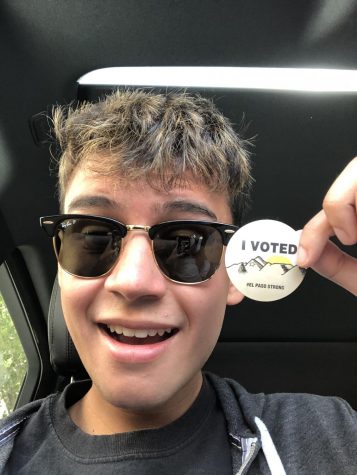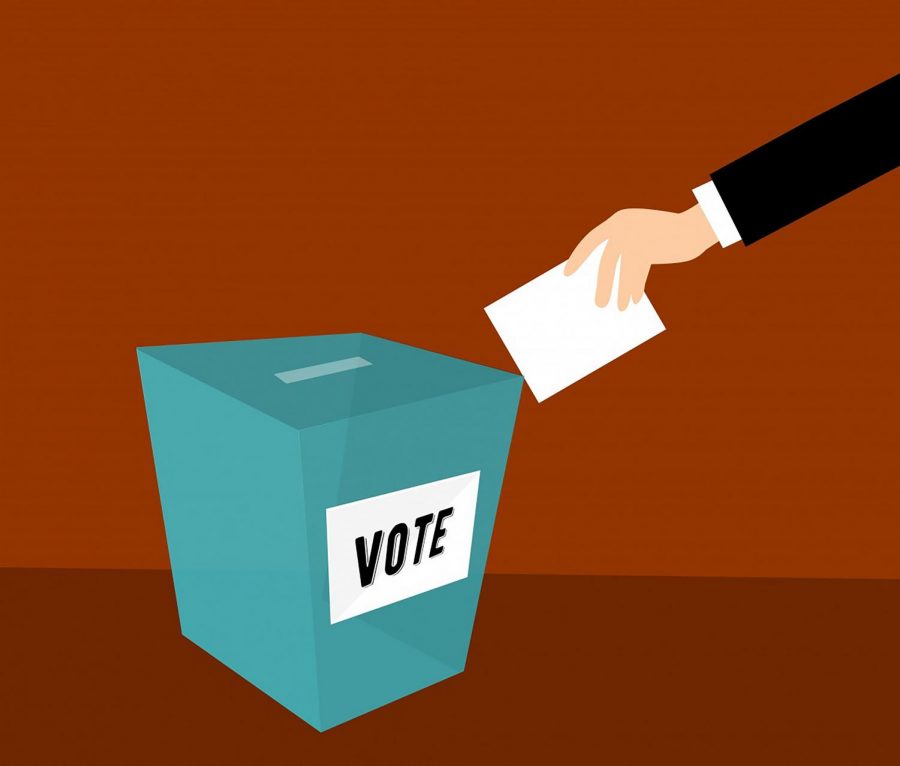Young Voter Turnout Surges As Election Looms
The 2020 Presidential Election Day is Nov. 3. Texas surpassed its 2016 voting total during the early voting period between Oct. 13-30.
November 2, 2020
As the Presidential election approaches, a new record has been set as the number of early votes casted surges to nearly 100 million in total, almost twice as many that did in 2016.
However, while this may appear to be the elective government functioning to its highest degree, low turnout from the youngest voting demographic (18-29) lurks as it has for decades.
While citizens in the United States gain the ability to vote when they turn 18, they don’t seem particularly eager to exercise this right. Only 44 percent of eligible voters in the 18-29 age demographic voted in 2016, the lowest turnout of all age demographics.
Mr. Reese, a history teacher at El Paso High School, provided insight into the effect disproportionate voting rates across age demographics can have on our government.
“The older an American is, the more likely they are to vote consistently. So, the elected officials, particularly in the House of Representatives and the U.S. Senate, are very concerned about the interests, perspectives, and desires of their most consistent voter block,” Mr. Reese said.
This tendency for elected officials to focus on older Americans’ interests because they vote more is terrible news for the younger, more politically apathetic generation.
Reese cites the negative impact this will have on today’s young Americans, saying, “The plan, or the ‘solution’ has been to keep services for that older age group intact or improved by planning in future years to decrease or eliminate services for today’s young adults.”
Newly able to vote citizens may find themselves with subpar social services and a ruined environment in the future because of their unwillingness to vote.
“These two candidates are very, very different, and you’re not choosing the almighty, you’re not picking the perfect, you’re picking the alternative to the other guy,” Reese said.

Young voters who feel that both main party options are bad picks should take a “lesser of two evils” approach may pose a problem for voters on the fence.
This is the type of mindset Jamie Schaffer, a senior at El Paso High, has towards this year’s election.
“They’re not the greatest to choose between,” Jamie said, referring to the two primary party candidates, Democratic challenger Joe Biden and the incumbent Donald Trump. “But I think it’s important to vote because it’s a right of ours that we have … even if the candidates aren’t the greatest, I feel like everyone should still vote if they are able to.”
There is evidence that Jamie, who has casted their vote early, may not just be an anomaly among young voters. This year’s election has seen a surge in young voter turnout, with over 7 million voters ages 18-29 casting their ballot early, a number already higher than in 2016.
“I think young voters should take voting more seriously because the future is in their hands,” senior, Olivia Hayner said. “In three years their vote may affect them more than they thought it would.”
With turnout among the youngest demographic at an unprecedented high, this year’s election may signal a turning point in a generation’s involvement in the political process. Jamie encourages this high engagement and urges his peers that can vote to do so, “Because we are the future. We are the change,” Jamie added.
“I mean look at what happened in 2016 where young voters didn’t turnout and we end up with Donald Trump,” senior, Andre De Santos said. “One good thing is we learned from that and young voter turnout has been the come up ever since.”


